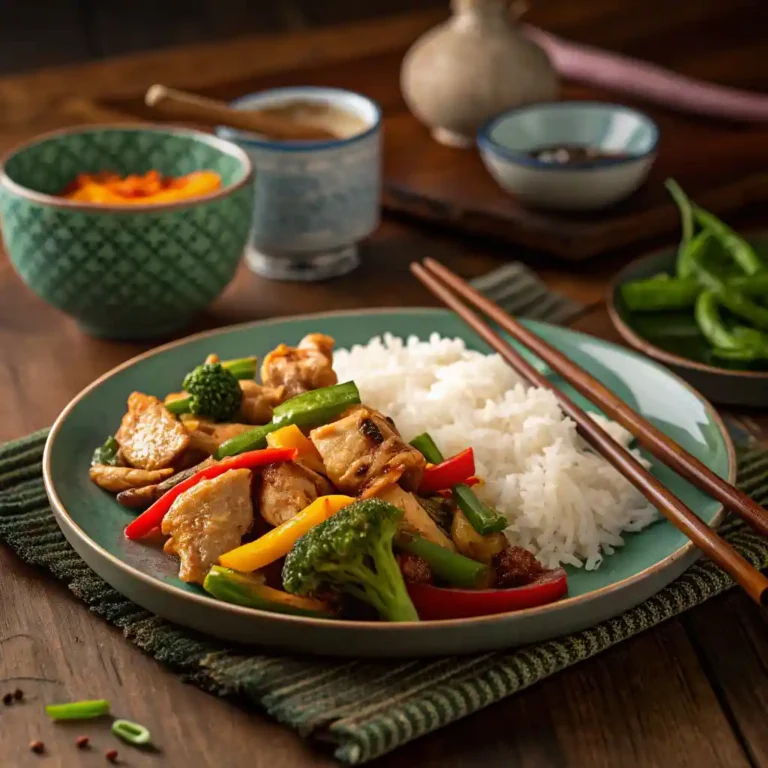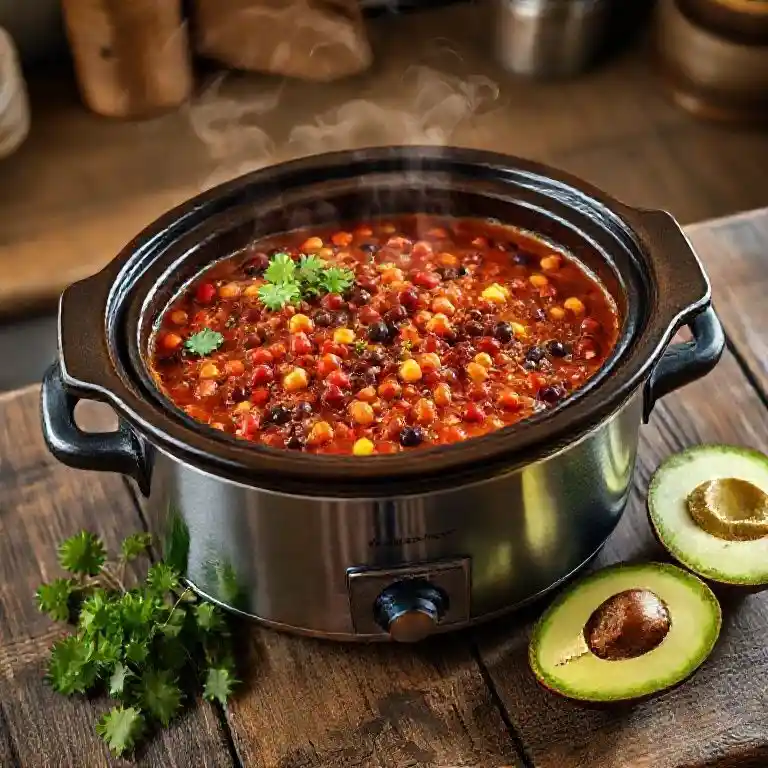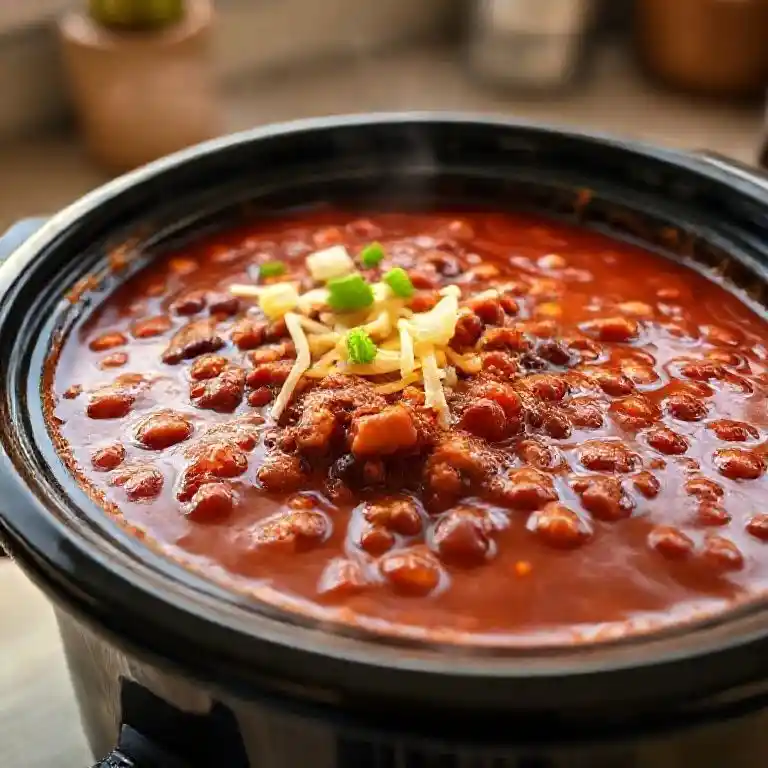Love Chinese food but following a gluten-free diet? You’re not alone! Many people assume that gluten-free and Chinese cuisine don’t mix, but that couldn’t be further from the truth. With the right knowledge and a few simple swaps, you can enjoy incredible gluten free Chinese food that’s just as flavorful and satisfying as traditional dishes.
Whether you have celiac disease, gluten sensitivity, or simply choose to avoid gluten, this comprehensive guide will show you exactly which Chinese dishes are naturally gluten-free, how to modify your favorites, and where to find the best gluten free Chinese takeout options. Let’s dive into the delicious world of wheat-free Chinese cooking!
Join Our Newsletter for More Healthy Cooking Tips
JUMP TO

Understanding Gluten Free Chinese Food
What Does Gluten-Free Mean in Chinese Cuisine?
Gluten is a protein found in wheat, barley, rye, and their derivatives. In Chinese cooking, gluten often hides in unexpected places, making it crucial to understand which ingredients to avoid when following a gluten-free diet.
Traditional Chinese cuisine actually offers many naturally gluten-free options, as rice has been the primary grain in most regions of China for thousands of years. However, modern Chinese-American restaurant dishes often incorporate wheat-based ingredients that weren’t part of traditional recipes.
Common Gluten Sources in Chinese Dishes
The biggest gluten culprits in Chinese food include:
Soy Sauce: Traditional soy sauce contains wheat as a key ingredient. This means it’s used in countless Chinese dishes, from stir-fries to marinades.
Wheat Noodles: Lo mein, chow mein, and many soup noodles are made with wheat flour.
Dumplings and Wontons: These popular appetizers use wheat flour wrappers.
Thickening Agents: Many sauces use wheat flour or cornstarch that may be cross-contaminated.
Seasoning Mixes: Pre-made spice blends often contain wheat-based anti-caking agents.
Naturally Gluten Free Chinese Food
The good news? Many authentic Chinese dishes are naturally gluten-free and absolutely delicious!
Rice-Based Dishes
Steamed White or Brown Rice: The foundation of Chinese meals, plain steamed rice is always safe for those avoiding gluten.
Congee (Rice Porridge): This comforting dish is made by slowly cooking rice until it becomes creamy. Traditional congee with plain toppings like scallions or ginger is naturally gluten-free.
Plain Fried Rice: When made with gluten-free soy sauce (like tamari) and without wheat-containing additives, fried rice becomes a perfect gluten free Chinese recipe option.
Protein-Rich Gluten-Free Options
Egg Drop Soup: This classic soup contains just eggs, broth, and cornstarch for thickening – naturally gluten-free when made traditionally.
Steamed Fish: Fresh fish steamed with ginger and scallions offers pure, clean flavors without any gluten concerns.
Salt and Pepper Dishes: Proteins like shrimp, chicken, or tofu prepared with just salt, pepper, and basic seasonings are typically safe choices.
Hot Pot: The broth-based cooking method allows you to control every ingredient that goes into your meal.
Popular Chinese Dishes That Can Be Made Gluten Free
You don’t have to give up your favorite Chinese dishes! Here’s how to enjoy gluten-free versions:
Gluten-Free Noodle Alternatives
Rice Noodles: Substitute wheat noodles with rice vermicelli or pad thai-style rice noodles in your lo mein and chow mein.
Shirataki Noodles: These zero-calorie noodles made from konjac root work wonderfully in stir-fries.
Zucchini Noodles: For a lower-carb option, spiralized vegetables make excellent noodle substitutes.
Safe Dumpling Options
Rice Paper Wraps: Create fresh spring rolls using rice paper instead of wheat wrappers.
Lettuce Cups: Use butter lettuce leaves to wrap your favorite dumpling fillings.
Gluten-Free Dumpling Wrappers: Many Asian grocery stores now carry wheat-free dumpling skins made from rice flour.
Gluten in Chinese Sauces and Seasonings
Understanding sauces is crucial for safe gluten free Chinese food preparation.
The Soy Sauce Problem
Regular soy sauce contains wheat, making it off-limits for gluten-free diets. However, you have excellent alternatives:
Tamari: This Japanese soy sauce is traditionally wheat-free (always check labels to be sure).
Coconut Aminos: A soy-free, gluten-free alternative with a slightly sweeter flavor profile.
Gluten-Free Soy Sauce: Many brands now produce wheat-free versions of traditional soy sauce.
Safe Sauce Swaps
Oyster Sauce: Look for gluten-free versions or substitute with a mixture of tamari and a touch of sugar.
Hoisin Sauce: Traditional versions contain wheat, but gluten-free alternatives are available, or make your own with tamari, rice vinegar, and honey.
Black Bean Sauce: Check labels carefully, as many contain wheat-based thickeners.
Dining Out Tips for Gluten Free Chinese Food
Eating at Chinese restaurants requires some strategy, but it’s absolutely doable!
How to Communicate Your Needs
When ordering gluten free Chinese takeout options or dining in:
- Be specific: Don’t just say “gluten-free” – explain that you need dishes without wheat, soy sauce, or wheat noodles.
- Ask about preparation: Request that your food be prepared in clean woks and with fresh oil.
- Inquire about sauces: Ask which sauces are gluten-free or request dishes without sauce that you can season yourself.
- Consider timing: Visit during less busy hours when kitchen staff can pay more attention to special requests.
Cross-Contamination Concerns
Shared Cooking Surfaces: Woks and grills may have gluten residue from previous dishes.
Oil Contamination: Fryer oil used for breaded items can contaminate otherwise safe foods.
Sauce Brushes and Ladles: These tools might spread gluten from one dish to another.
Prep Areas: Flour dust can settle on surfaces and contaminate gluten-free ingredients.

Cooking Gluten Free Chinese Food at Home
Creating celiac safe Chinese food at home gives you complete control over ingredients and preparation methods.
Essential Gluten-Free Pantry Staples
Stock your kitchen with these wheat-free Chinese cooking essentials:
- Tamari or gluten-free soy sauce
- Rice vinegar
- Sesame oil
- Coconut aminos
- Rice wine (check labels)
- Cornstarch for thickening
- Rice noodles in various widths
- Gluten-free oyster and hoisin sauces
Easy Gluten-Free Recipes to Try
Simple Tamari Fried Rice: Stir-fry day-old rice with eggs, vegetables, and tamari for an authentic taste.
Ginger Scallion Steamed Fish: Season white fish with ginger, scallions, and a splash of tamari, then steam until flaky.
Lettuce Wrap Chicken: Stir-fry ground chicken with ginger, garlic, and gluten-free seasonings, serve in butter lettuce cups.
Is Fried Rice Gluten Free Chinese Food?
This popular dish deserves special attention since it’s often considered a “safe” option.
Ingredients That Make Fried Rice Safe or Unsafe
Safe ingredients: Rice, eggs, vegetables, plain proteins
Risky ingredients: Regular soy sauce, pre-seasoned proteins, certain oils
Hidden dangers: Cross-contamination from shared cooking surfaces
How to Ensure Your Fried Rice is Gluten Free Chinese Food
When ordering out, specifically request:
- No soy sauce or only tamari/gluten-free soy sauce
- Fresh wok or clean cooking surface
- Plain proteins without pre-made marinades
- Verification that all seasonings are gluten-free
For home cooking, use tamari instead of regular soy sauce and ensure all your ingredients are certified gluten-free.
Is Chinese Food Safe for Celiac?
People with celiac disease need to be extra cautious, as even tiny amounts of gluten can cause serious health issues.
Risks for People with Celiac Disease
Cross-contamination: Even naturally gluten-free dishes can become unsafe if prepared alongside wheat-containing foods.
Hidden ingredients: Many sauces, seasonings, and pre-made items contain wheat derivatives.
Language barriers: Communication about dietary restrictions can sometimes be challenging in restaurants.
Best Practices for Celiac-Friendly Chinese Dining
- Choose restaurants with gluten-free awareness: Look for establishments that specifically cater to dietary restrictions.
- Stick to simple preparations: Steamed dishes, plain rice, and basic stir-fries are generally safer.
- Bring your own sauce: Consider bringing certified gluten-free tamari to ensure safe seasoning.
- Research beforehand: Call restaurants in advance to discuss your needs and their ability to accommodate celiac requirements.
FAQs About Gluten Free Chinese Food
What Chinese dishes are normally gluten-free?
Plain steamed rice, egg drop soup (when made traditionally), steamed vegetables, plain grilled or steamed proteins, and congee are typically naturally gluten-free. However, always verify preparation methods and ingredients with restaurant staff.
Does Chinese fried rice have gluten?
Traditional fried rice can be gluten-free if made with tamari instead of regular soy sauce and prepared on clean surfaces. However, many restaurants use regular soy sauce, making it unsafe for those avoiding gluten. Always ask about ingredients and preparation methods.
Is Chinese food safe for celiac?
Chinese food can be safe for people with celiac disease, but it requires careful attention to ingredients and cross-contamination prevention. Stick to simple, naturally gluten-free dishes, communicate clearly with restaurant staff, and consider preparing meals at home for the safest option.
Can I eat Chinese noodles on a gluten-free diet?
Traditional wheat-based Chinese noodles are not gluten-free. However, you can enjoy rice noodles, which are naturally gluten-free, or look for specialty gluten-free wheat noodles in some restaurants and stores.
What’s the best gluten-free soy sauce substitute?
Tamari is the most popular substitute, offering a similar umami flavor to traditional soy sauce. Coconut aminos provide a slightly sweeter alternative, while certified gluten-free soy sauce brands offer the closest match to the original taste.
Conclusion: Enjoying Safe Gluten Free Chinese Food Dining
Living gluten-free doesn’t mean giving up the incredible flavors of Chinese cuisine. By understanding which dishes are naturally safe, learning about proper substitutions, and knowing how to communicate your needs effectively, you can continue enjoying gluten free Asian food both at restaurants and at home.
The key is preparation and knowledge. Start with simple, naturally gluten-free dishes like steamed rice and plain proteins, then gradually explore more complex preparations as you become comfortable with safe ingredients and cooking methods. Remember that many traditional Chinese dishes were naturally gluten-free long before gluten-free became a dietary trend!
Ready to start your gluten-free Chinese food journey? Download our free gluten-free Chinese cooking guide with 15 easy recipes, complete shopping lists, and restaurant phrase cards to help you communicate your dietary needs. Simply enter your email below to get instant access to delicious, safe Chinese meals you can enjoy with confidence!
[Sign up for your free gluten-free Chinese cooking guide →]
Have you tried making gluten-free Chinese food at home? Share your favorite wheat-free Chinese cooking tips and recipes in the comments below – we’d love to hear about your culinary adventures!





